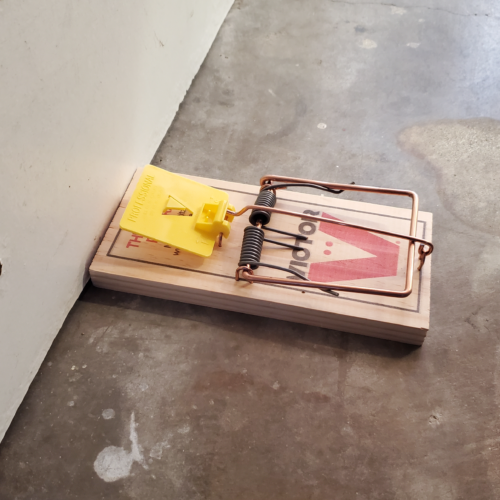Rat infestations can be a common problem in Orange County, California, but with the right approach, you can effectively set rat traps to control the issue. Here are some tips to help you properly set rat traps and get rid of these pesky rodents.
1. Choose the Right Trap:
There are various types of rat traps available, such as snap traps, and electronic traps. Snap traps are commonly used and considered effective. Select a trap that suits your preference and needs.
2. We do not recommend using glue boards:
These traps can cause unnecessary suffering and are considered inhumane. Rats caught on glue boards endure prolonged distress as they struggle to free themselves. For more information on why using glue traps is discouraged please visit: DiscoverWildCare.org
2. Identify Rat Activity Areas:
Before setting the traps, identify the areas where rats are active. Look for signs like droppings, chewed wires, or gnaw marks. Rats tend to frequent dark and secluded spaces, so pay close attention to basements, attics, and crawl spaces.
3. Bait the Traps:
Use bait that is attractive to rats, such as peanut butter, cheese, or dried fruit. Apply a small amount on the trigger of the trap. Make sure the bait is securely attached to prevent rats from easily stealing it.
4. Set Multiple Traps:
Position several traps strategically in various locations to enhance your rat-catching success. Place them near walls or corners, as these are common routes for rats. Place the trap with the baited end of the trap flush against the wall for maximum effectiveness.
5. Check and Reset Regularly:
Check the traps daily to see if any rats have been caught. If a trap has successfully caught a rat, dispose of it properly and reset the trap. Rats are wary creatures, so it’s essential to maintain a consistent trapping routine.
6. Common Mistakes When Setting Rat Traps:
There are several common errors people make when setting rat traps. One of them is applying too much bait, which can actually deter rats from approaching the trap. Another mistake is pointing the traps away from the wall; they are more effective when placed with the entrance flush against the wall, as rats tend to travel along walls. Avoiding these common pitfalls can significantly improve your chances of successfully trapping rats.”.
7. Seal Entry Points:
While trapping rats is crucial, it’s equally important to prevent them from re-entering your property. Inspect your home for any holes or gaps and seal them with steel wool or caulk.
Remember, rat traps should be used responsibly and with caution. Keep them out of reach of children and pets to avoid any accidents. If you find the rat infestation is beyond your control, please call 1 (877) 958-4437 or click here.
By following these steps, you c properly set rat traps and take control of a rat infestation in Orange County, California.
